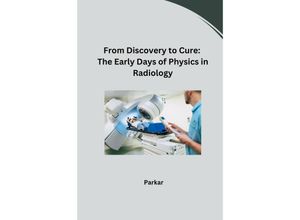The story of medical imaging and how physics played a crucial role in its development has
fascinating roots. From Discovery to Cure: The Early Days of Physics in Radiology unveils a
period of groundbreaking discoveries that revolutionized medicine.Imagine a time before X-rays
when internal injuries remained a mystery. In 1895 Wilhelm Roentgen's accidental discovery of
X-rays ushered in a new era. Physicists captivated by this invisible radiation quickly
recognized its potential in medicine.These early pioneers faced challenges:-Understanding the
Unknown: The nature of X-rays and their interaction with the body were initially
unclear.-Safety Concerns: The long-term effects of radiation exposure were yet to be
understood.-Technological Limitations: Early X-ray machines were cumbersome and produced images
with limited detail.Despite these hurdles physicists persevered:-Developing Techniques: They
devised methods to control radiation dosage and improve image quality.-Safety Measures: Early
radiation protection practices were established to safeguard patients and healthcare
workers.-Expanding Applications: Physicists explored using X-rays for diagnosing broken bones
lung illnesses and even tumors.The early days of physics in radiology laid the groundwork for
future advancements. These discoveries paved the way for:-Modern Imaging Techniques: From CT
scans to MRIs physics continues to be a driving force in medical imaging innovation.-Improved
Cancer Treatment: X-rays became a cornerstone of radiotherapy enabling targeted treatment of
tumors.-A New Era of Medical Diagnosis: Physicists' contributions transformed medical practice
by allowing doctors to see inside the human body without invasive surgery.The story of physics
in radiology is one of continuous discovery and innovation. From those early days the field
has grown exponentially shaping the way we diagnose and treat diseases ultimately improving
human health.



